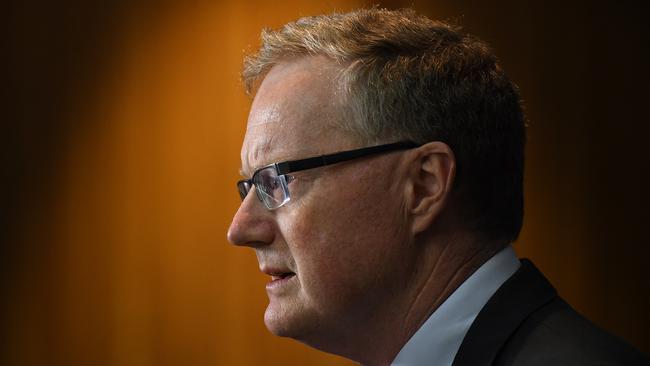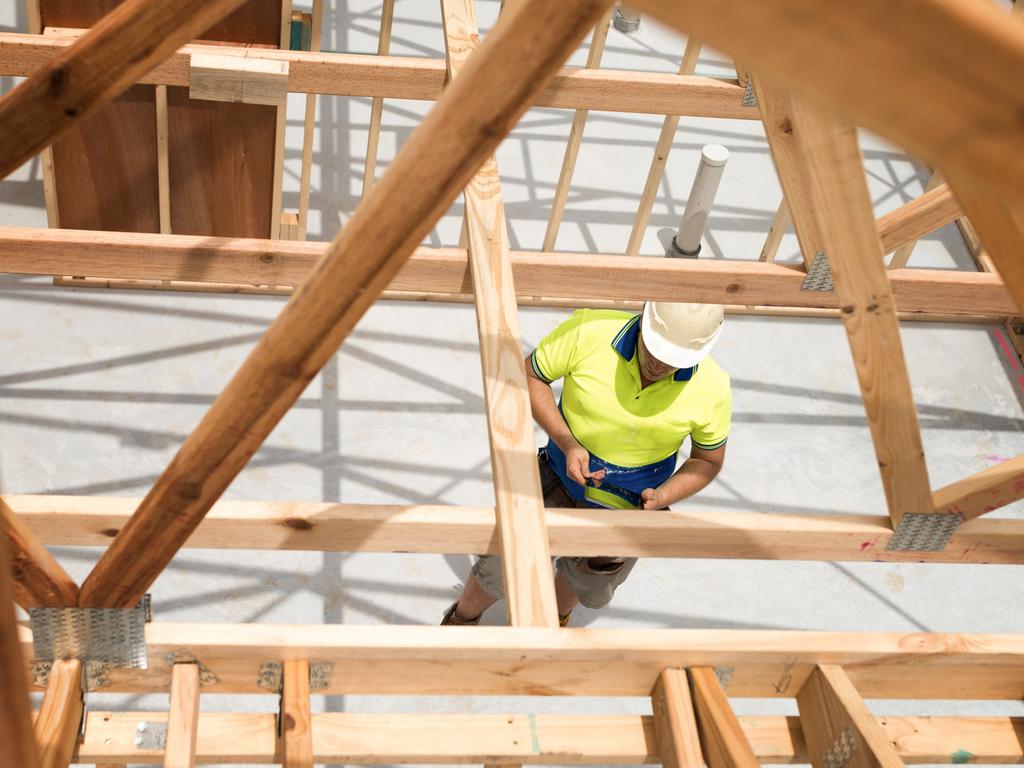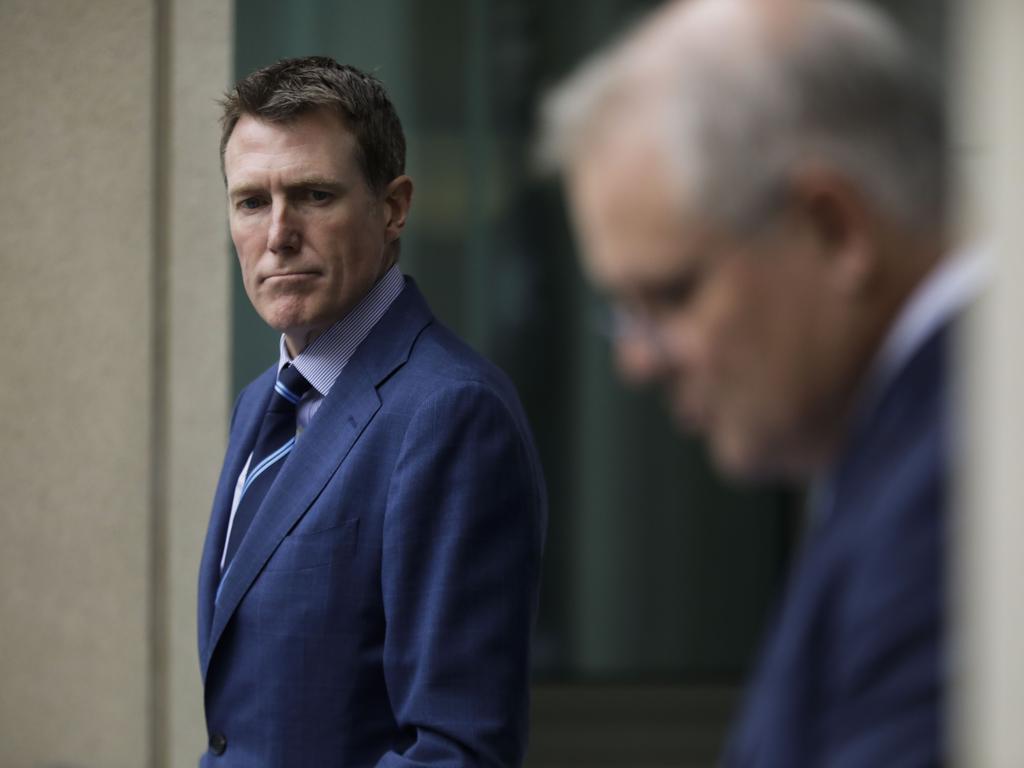The era of zero interest rates has begun as RBA runs out of ammunition
The robust role of the Reserve Bank in our economy may well end with today’s rate decision.

Steadily falling rates have put a rocket under debt, but with rates about zero in much of the developed world, how rickety is the economic edifice we’ve created?
How much of the new “wealth” — at least for those lucky enough to own assets — has been artificial, and therefore destined to evaporate once our monetary elastic bands snap back to reality?
The pandemic, for all its destruction, will at least ensure we have the answer sooner.
Central banks this year have used up whatever conventional interest rate ammunition they had left after the global financial crisis, and launched on a Cirque du Soleil of money creation and asset purchase schemes to try to lift inflation and keep interest rates low.
The RBA’s final cut to the cash rate expected on Tuesday afternoon, from 0.25 per cent to 0.1 per cent, effectively zero, will be symbolic. At 15 basis points it would be the smallest change in the cash rate in absolute terms (although the largest in percentage terms).
The former characterisation gives a better flavour of its impact on the economy: nothing.
As assistant RBA governor Chris Kent noted recently, the cash rate has been trading around 0.13 per cent since May.
Even if the RBA eventually follows Switzerland, Denmark, Japan and others down the path of “negative official interest rates”, it won’t change the fact the monthly charade of tweaking one interest rate to influence inflation, employment and growth is over.
The board meeting will mark the end of 30 years of inflation targeting with a single policy lever — the overnight cash rate — putting the RBA in the same invidious position that other central banks have faced for years.
That is, the realisation that their ever bolder and more byzantine efforts to affect consumer price inflation, employment and economic growth — the things they aim to control — have achieved little except pump up asset prices and debt, both public and private, to historic heights.
“The real question is whether, in their attempts to solve the world’s problems, central bankers have inadvertently created bigger problems for themselves and the communities they serve,” says Warren Hogan, an economist at UTS Business School.
The conventional wisdom says interest rates will hover about zero indefinitely as we wait patiently for central bankers to engineer an inflation revival, which they can then triumphantly snuff out should it get out of hand.
So far, so good. Despite the creation of trillions in new assets by central banks to subsidise governments and, in the US and Japan, the debts of private business, inflation shows no sign of stirring.
Closer to home, the federal government’s JobKeeper program, estimated to cost about $70bn, is about the same as the increase in the RBA’s government bond holdings since December. JobKeeper, you might say, was paid for by a few keystrokes in Sydney’s Martin Place.
The US Federal Reserve, by letting the US money supply shrink, contributed hugely to, and some say caused, the Great Depression.
Central banks in Europe, Africa and South America have periodically prompted hyperinflations, with similarly devastating results.
Clearly, there’s no chance of the former happening this time, as central banks join with their privately owned peers in creating money and credit like there’s no tomorrow. But the latter can’t be ruled out entirely. The absence of a free lunch is among the few iron laws of economics.
“Over the past two decades, there has been a loss of perspective about what monetary policy can and can’t achieve,” Hogan writes in a recent Centre for Independent Studies monograph that posits “the end of monetary policy”.
Notwithstanding forecasts that the population is set to shrink, both the value of new home loans and the number of new houses and apartments approved for construction soared in September.
Monetary policy can bring forward economic activity in time, but it can’t affect anything real in the long run. The RBA is also expected to announce a bond-buying scheme. This, along with the growing array of “tools” already introduced, will be couched as a way of lifting inflation back to between 2 and 3 per cent.
In reality, it will reflect central banks’ new-found mission everywhere: to ensure their government owners, facing gargantuan deficits for many years, can borrow as cheaply as possible.
“The biggest problem with unconventional policies is that they become a permanent feature once the crisis has passed,” Hogan says. None of the “temporary” quantitative schemes introduced in Europe, Japan and the US has been withdrawn since 2008.
With monetary policy intellectually confused, the pandemic has supercharged the return of Keynesian fiscal policy — the idea that governments can manage the economy by adjusting taxation and spending.
That ended badly in stagflation in the 1970s and 80s.
For a discipline that so dominates public life, it’s remarkable how little economists agree on.
In this time of great uncertainty, perhaps central banks need to get back to basics, and be less ambitious in their goals.
For most of their history they essentially had two basic functions: financing their governments, especially during wars, and occasionally stepping into financial markets to stop banking crises.
The idea they could control prices, employment and economic growth would have been fanciful.
Prosperity is never the gift of either fiscal or monetary policy and its supposedly wise practitioners. It’s a consequence of technological progress and more efficient allocation of resources.
On the former, we’re hostage to fortune. On the latter, we need much more: such as tackling waste in the supply of healthcare, financial services and education — and, of course, government itself.
Unfortunately, it’s much easier to demand more from obscure monetary and fiscal policies which can have no beneficial effect in the long-run.








Tuesday’s Reserve Bank board meeting, expected to reduce the official interest rate for the first time to an effective zero, brings the curtain down on the era of central banking that has pushed house and share prices to historic highs.